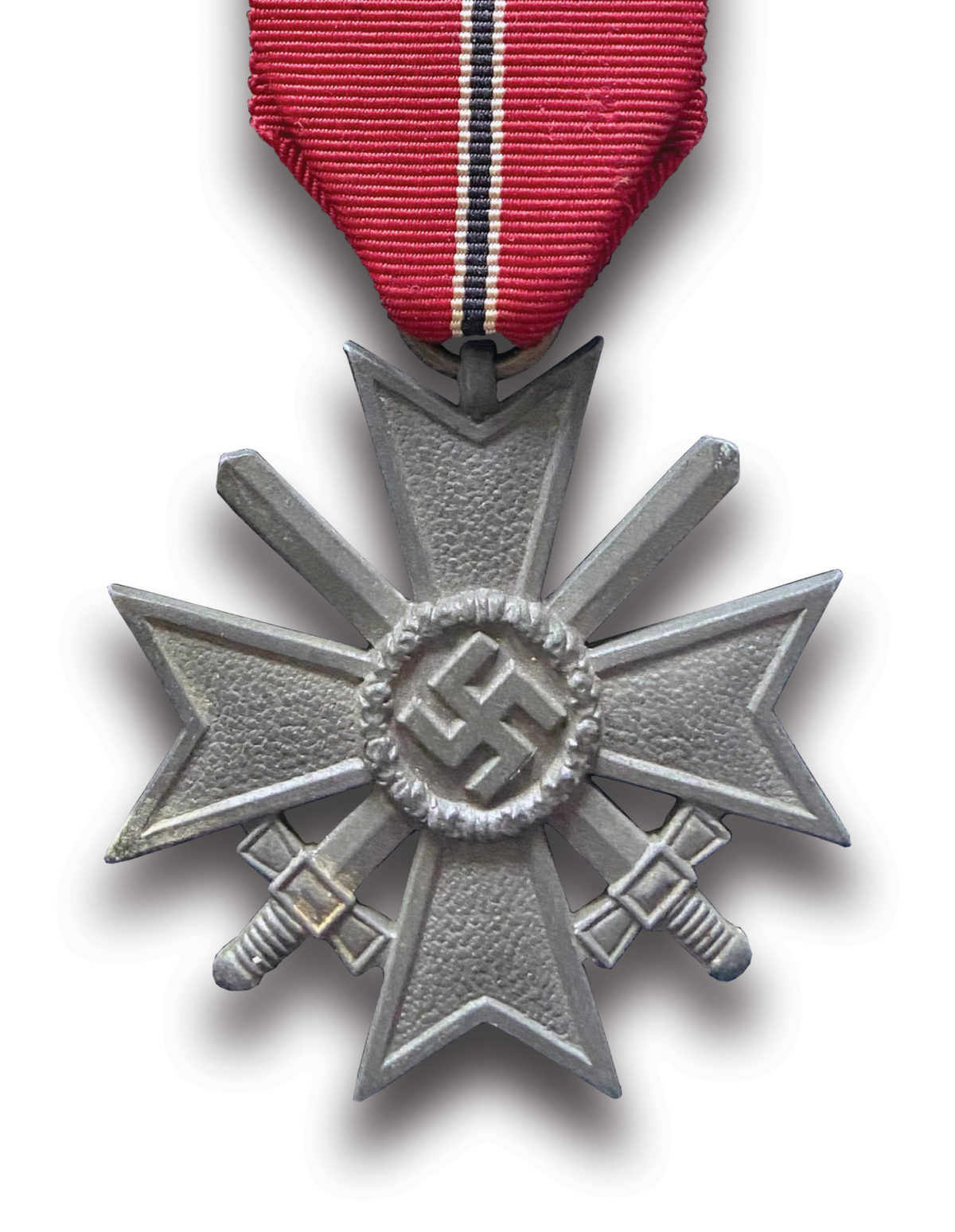My father, Robert W. Wicks, was a B-24 bombardier with the 763rd Bomb Squadron of the 460th Bomb Group, 15th Air Force, based in Spinazzola, Italy. He was shot down on his 24th combat mission in December 1944 and saved by a Slovak family who hid him on their farm for almost five months.
Shortly after my father passed away in 1996, I came across this German medal I have not been able to identify. Can you tell me its significance?
—David E. Wicks, Dansville, N.Y.
As the war entered its final year, thousands of American servicemen snatched up Third Reich medals and pins by the handful. They were perfect souvenirs—small and plentiful, but still bearing the fearsome iconography of the Nazi regime.
While The National World War II Museum focuses on the American wartime experience, this institution also holds a vast and varied collection of German military and civilian ephemera, most of which came home in the sea bags and rucksacks of exhausted U.S. servicemen returning home in 1945 and 1946. A dive into our collection reveals no fewer than 15 examples of this medal, the Kriegsverdienstkreuz, or War Merit Cross, which was awarded to both soldiers and civilians for exceptional service unrelated to combat. While more than a dozen of these silver or bronze state decorations reside in our collection, I have never seen one with a ribbon apparently poached from another German military award.
The blood-red ribbon attached to this War Merit Cross, with thin black and white lines at its center, comes from an Ostmedaille, known in Western circles as the Eastern Medal, or more formally, the Winter Battle in the East 1941–42 Medal. It was awarded to German servicemen who fought in the invasion of the Soviet Union during that first terrible winter. The commendation was also given to the families of those who died, inspiring some to ghoulishly call it the “Order of the Frozen Meat.”
The owner of this unusual conglomeration of wartime memorabilia tumbles into our story from war-torn skies. First Lieutenant Robert W. Wicks bailed out of his stricken B-24 on December 11, 1944. He wasn’t supposed to be there, but at the last moment had switched to the ill-fated Liberator to give the new crew a more experienced bombardier. He parachuted into Slovakia, where he was hidden by the Pavol Macina family on their farm for months.
At the conclusion of fighting in Europe, Wicks came home. On his long road back, did he encounter a savvy entrepreneur selling souvenirs from the cast-off fragments of the now-defunct totalitarian state? Or did he assemble this unique war memento on his own? We may never know for sure. While the origin of the unusual piece is murky, the psychology of grabbing a trophy checks out. Many soldiers, sailors, and fliers, when given the chance, snatched a small fragment of the vanquished to take home.
Have an artifact you can’t identify?
Email footlocker@historynet.com with the following:
- Your connection to the object and what you know about it.
- The object’s dimensions, in inches.
- Several high-resolution digital photos taken close up and from varying angles.
- Pictures should be in color, and at least 300 dpi.
Unfortunately, we can’t respond to every query, nor can we appraise value.






